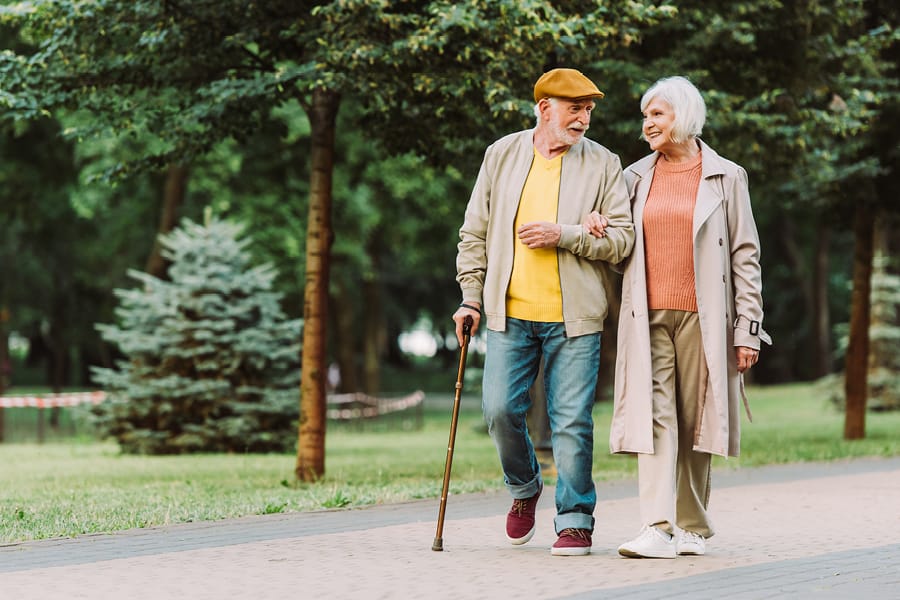Helping Prevent Falls: Practical Tips for Caregivers
Jo from the South Warwickshire Foundation Trust recently hosted some useful training for out team around fall prevention for older adults. Falls are one of the biggest causes of injury in later life, but with the right knowledge and small changes, we can help keep people safe and independent for longer.
Why Falls Prevention Matters
Falls aren’t just accidents—they can lead to serious injuries and have a big impact on confidence and independence. But the good news is that most falls can be prevented by understanding the risks and taking simple precautions.
What Increases the Risk of Falls?
There are lots of reasons why older adults might be more likely to fall. Knowing what to look out for helps us step in before problems arise:
- Mobility issues – Weakened muscles, poor balance, or vision problems can make moving around harder.
- Home hazards – Clutter, dim lighting, or uneven flooring can turn a safe space into a trip hazard.
- Medication side effects – Some medications cause dizziness, drowsiness, or balance problems.


Simple Ways to Reduce Fall Risks
Making a few small changes can have a huge impact:
- Encourage gentle exercise – Activities like walking, stretching, or balance exercises can improve strength and coordination.
- Make the home safer – Removing trip hazards, improving lighting, and installing grab bars can make a big difference.
- Regular health check-ups – Keeping on top of vision, hearing, and general health can help identify issues before they lead to a fall.
Supporting Independence and Well-Being
Preventing falls isn’t just about avoiding injuries—it’s about helping people stay active, confident, and independent for as long as possible.
- Reducing worry – Many older adults develop a fear of falling, which can actually make them less active. Encouraging safe movement helps build confidence.
- Avoiding hospital stays – Falls can lead to lengthy recoveries, but prevention helps reduce hospital visits and the stress they bring.


How Caregivers Can Help
As a Caregiver, you’re in the best position to spot risks and take action. Here’s how you can make a real difference:
- Pay attention to changes – If someone is moving differently, struggling with balance, or feeling unsteady, it’s worth flagging.
- Check their surroundings – Keep an eye out for potential hazards like rugs, wires, or poor lighting.
- Have open conversations – Reassure them that falls can often be prevented and encourage them to speak up about any concerns.
Working Together to Prevent Falls
It’s not just down to Caregivers—creating a safe environment is a team effort. Encouraging older adults to take an active role in their own safety makes all the difference.
- Talk about safety – Regular check-ins and discussions can help identify concerns before they become problems.
- Encourage small changes – Simple adjustments, like wearing well-fitted shoes or using a walking aid, can improve stability.
- Create a support network – Peer support groups or exercise classes can help build confidence and keep people moving.
Getting Extra Support
Caregivers don’t have to do this alone. There are plenty of resources available to help with falls prevention:
- Healthcare professionals – Regular check-ups with doctors, physiotherapists, or occupational therapists can help spot and manage risks.
- Community support – Local groups and charities often offer falls prevention workshops and exercise classes.
- Training and guidance – Ongoing training for Caregivers can provide extra knowledge and support.
FAQ: Common Questions About Falls Prevention
What are the most common causes of falls in older adults?
Falls often happen due to a mix of health issues, home hazards, and medication side effects. Weak muscles, poor balance, and vision problems make falls more likely. Cluttered spaces, dim lighting, and certain medications that cause dizziness can also increase the risk.
How can I help someone who’s afraid of falling?
Fear of falling can lead to reduced movement, making falls more likely. Encouraging safe exercise, offering reassurance, and making small home adjustments—like adding grab rails—can help build confidence. Simple activities, such as chair exercises or supported walking, can also restore trust in mobility.
What home modifications can reduce fall risks?
Small changes can make a big difference. Installing grab bars in bathrooms, using non-slip mats, and improving lighting help prevent accidents. Keeping walkways clear of clutter and ensuring rugs are secured can also create a safer environment. A professional home assessment may provide further recommendations.
Are there specific exercises that can help prevent falls?
Yes! Strength and balance exercises improve stability and coordination. Simple movements like standing on one leg or walking heel-to-toe can help. Activities such as tai chi, yoga, or guided physiotherapy can also build confidence and reduce the risk of falls over time.
How often should fall prevention measures be reviewed?
It’s best to reassess fall risks every few months or after any health changes. If someone has had a recent fall, an immediate review should be done to identify the cause and prevent future incidents. Keeping an open dialogue with clients and families helps spot potential concerns early.
Discover More For Your Care Journey
Visit our Learning Centre for expert articles, helpful videos, in-depth guides, and answers to common questions – helping you make informed care decisions with confidence.
Jo joined Unique Senior Care as a Carer in 2011, transitioning from a nursing background. With 25 years of experience in health and social care, including mental health and children with disabilities, Jo has embraced numerous growth opportunities within the company.
Passionate about learning and development, Jo earned a Level 5 Diploma in this field and is committed to equipping teams with the skills needed for outstanding care.
Jo’s qualifications include advanced training in people handling, risk assessment, safeguarding, basic life support, first aid, health and safety, and dementia care. Jo has also completed numerous workshops and CPD courses, such as the SCIE’s Co-Production webinar.
These accomplishments reflect Jo’s dedication to fostering a culture of safety and excellence in care.


